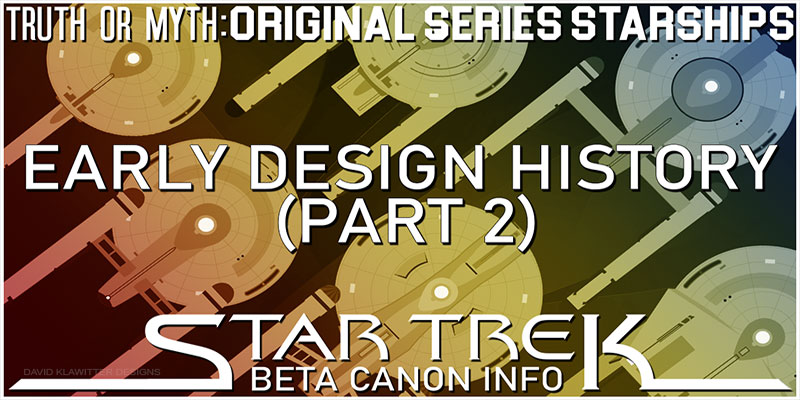Hello and welcome to another episode of Truth OR Myth, a Star Trek web series that normally looks at the Truth, or canon, information to dispel the myths that have surfaced on a given topic. Today’s episode continues our journey through Beta Canon, this time taking a look at 2 more starship designs done in the style of the Original Series of Star Trek.
With the successful launches of the Constitution, Pioneer, Perseus and Gemini Classes, Starfleet Command began setting their sights on further, more innovative starships designs. But what is the history behind these designs? Well today, we find out…
Of course, there IS no information available on any of these classes in Alpha Canon, so what I’ve done is taken the very tiny bit of information there is in Beta Canon, and created an entire historical narrative around them, all to give you good “Tri-naries” a little bit more design history info to chew on.
As a result, though, this video should pretty much be taken with a grain of stardust, and only considered a little bit of Star Trek Fun! And so, with all that out of the way, let us begin.
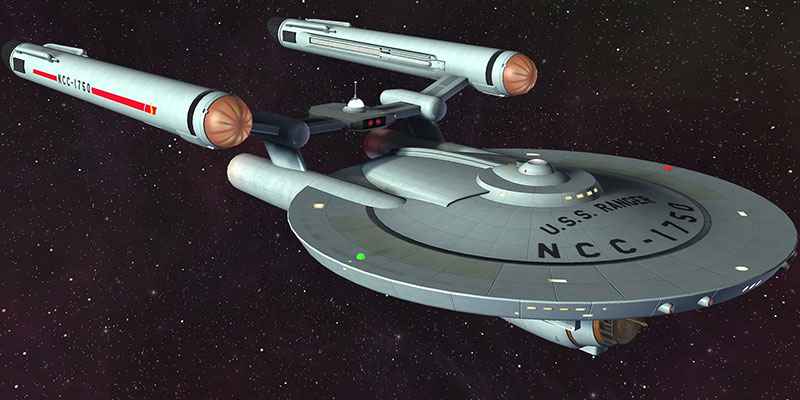
The Ranger Class
Extremely happy with the Perseus Class as an escort type vessel for Starfleet, the admiralty wanted even more powerful and larger starships to act as the backbone of the fleet, should any warlike situations arise.
Diplomatic Relations with both the Klingon and Romulan Empires were shaky at best, and given that Starfleet had performed very poorly against the Klingon Empire in the war of the mid-2250s, they wanted to ensure that should war break out again, that this time, they’d be ready.
Though the Constitution Class had proven to be a powerful and versatile class of starship, its internal systems had been geared towards scientific study, with a batch of 13 Starships constructed to explore the vastness of space in 5-year mission increments.
The second round of Constitution Classes had begun construction by the end of 2250s, and these Mark 2 Constitution Classes included many upgrades and technological advancements not included in the old mark 1’s, but still were primarily designed with scientific goals in mind, and so with Starfleet still running scared, and intelligence suggesting the Romulan and Klingon Empires were beginning alliance discussions, Starfleet poured much of its resources into creating pure Battleships, the likes of which no one would have seen before.
The first of these Battleship designs would become known as the Ranger Class.
This class of starship would use the Constitution Class design as a starting point, and to confirm to tactical norms of the Era, would see it’s individual starship components re-arranged to decrease its target profile. Where the Constitution Class would have a Neck which connected the Primary to the Secondary Hull, The Ranger Class would become a merged design, integrating the 2 separate Hulls into one massive primary unit.
Not only did this decrease it’s target profile, eliminating the tactical liabilities of having a neck connect the 2 hulls, but it also allowed for a far smaller shield bubble grid to be needed to protect the starship, this meant this class could last far longer in a firefight then it’s Constitution Class Cousin.
The Warp Nacelles in this design would be connected to a specially designed Weapons pod, which itself was connected through catamaran-style pods which extended beyond the saucer section to the aft of the ship. The weapons pod would include 2 forward torpedo launchers and 2 additional aft torpedo launchers. This weapons pod design would itself end up refit and upgraded to be included in the new Miranda Class of starship when that class was launched.
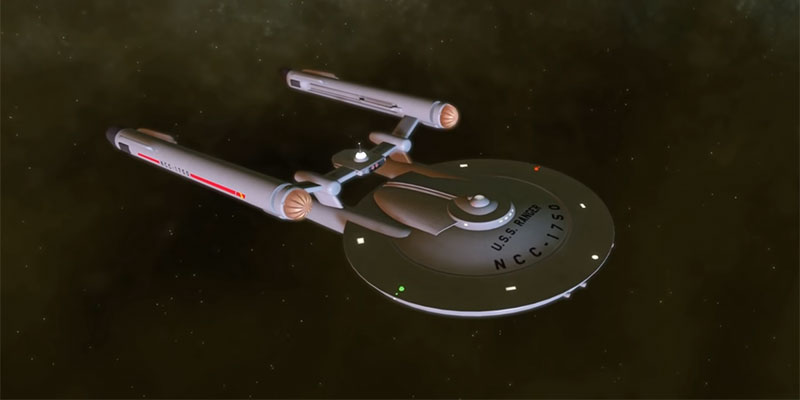
2 large Impulse Engine vents, would be included in the aft section of the catamarans, which made this class have the ability to travel beyond the standard Full impulse speed, Full impulse being 1 quarter the speed of light. The addition of almost double the number of Reaction Control Thrusters would also increase these vessels manoeuvrability.
A standard Shuttlebay remained in the aft section of the engineering hull.
During its shakedown cruise, the Ranger class perform admirably, having a 23% Increase in power of the Constitution Class, and it’s increased manoeuvrability made this class a very hard starship to lock on to and hit with standard weapons of the day, and even though Starfleet Command was very happy, they still wanted more Phaser Emitters installed on this class before they put the entire class into production.
By 2263, the design had been approved, and an initial order of 12 Vessels began construction at the utopia Planitia ships yards that orbited Mars.
Though this class had performed well, and fit Starfleet’s expectations to a tee, this Class would not survive passed the mid-2270s. With Starfleet’s development of the Refit Constitution Class, along with their desire to once again re-invent the Fleet in the New Constitution Classes image, the Ranger class would end up being left by the wayside, as the Miranda class could outperform and outgun this class by leaps and bounds, and although Starfleet did commission a project to determine the feasibility of updating this design, it was quickly discovered that there would be no benefit in doing so, as again, the Miranda Class, which was far easier, and less resource-intensive to construct, could match the power output and manoeuvrability of the ranger class.
And as a result, the U.S.S. Ranger itself would be longest-lasting surviving Ranger Class Vessel, being decommissioned in early 2276, and included in the Starfleet Starship Museum.
Though this class did become obsolete rather quickly, it still became a testament to both Starfleet ingenuity and its drive to ensure that remained a viable power within the Milky Way Galaxy and could protect all the citizens of the United Federation of Planets…
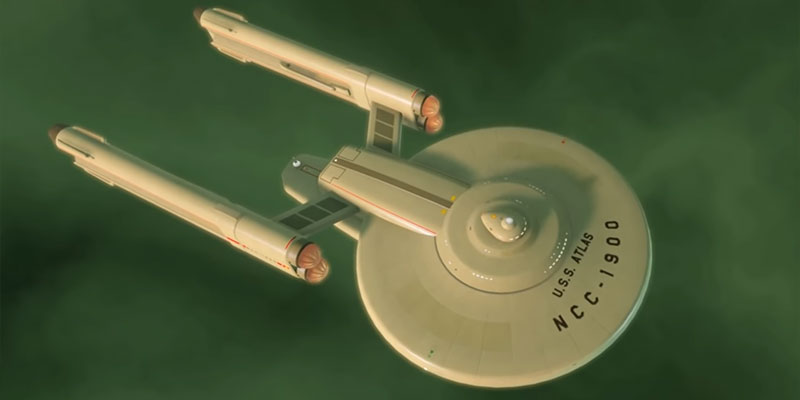
The Atlas CLass
With Starfleet Command in starship design fever mode, it allowed it’s Corp of Design Engineers a lot of leeway’s to experiment with starship designs. One unorthodox design that Starfleet command quickly became interested in, was that of the Atlas Class.
The Atlas Class was a Dreadnought Battleship, nothing more, nothing less. Utilizing every single technological advancement that Starfleet Command had at its disposal, Starfleet hoped that this class would allay any lingering fears within the federation as to whether the organization had learned it’s the lesson from the first Klingon War and now was ready to defend Federation member worlds to victory should another state of war be declared.
As a result of this fear, and need to quell it by Starfleet, the immense leeway they gave to their Core of Design Engineers would end up being the downfall of both this design and change Starfleets own Starship design policies leading into the 2270s. Just like the Ranger Class, the Atlas Class would use the Constitution Class design as it’s starting point and would end up appearing as more of a bulked-up Constitution Class than that of the Ranger class.
The first thing that was done for this class was again the removal of the neck from the Constitution Class. Connecting the saucer section to the Engineering section through a much thicker, quite smaller neck, a type of a design choice which would be refined and would eventually see it’s inclusion in the Excelsior Class starship design of the 2280s. They also increased the size of the engineering hull, almost doubling the available internal space to allow for 2 warp cores to be installed in the design.
The Warp Nacelles for this class were also redesigned, this time to merge what effectively was 4 different nacelles into a 2 nacelle design. With the Gemini classes 4 nacelle design being seen as a huge success by Starfleet in regards to its increase in speed, Starfleet wanted a pure Battleship Class to at least match the speed of the Gemini Class or even overtake it, but to add 4 separate nacelles to a Battleship was seen as tactically unsound, so using theoretical data from the Daystrom Institute, Starfleet approved a plan for the new nacelles which in theory would operate as though 4 nacelles were attached to the starship.
An extension would be added aft of the saucer section to which the nacelle pylons would be attached to and 2 large impulse vents would also be included in this design.
Another, considered bizarre, decision by Starfleet, was to begin construction on 12 of the Atlas Class starships at the same time. Up to this point, the standard procedure would be for Starfleet Command to construct a prototype of a new starship class, conduct shakedown and analysis of that design before presenting it to the Federation Council for approval and then order whatever amount of the said starship class to be constructed, and although this standard procedure, in actuality it was merely a courtesy rather than law, this was the first time in its history that Starfleet Command had not followed it, and this in itself would cause great tension with some of the federation member Worlds.
Nevertheless, by the launch of the U.S.S. Atlas in 2267 Starfleet had high hopes for this class and had gambled a lot in it’s design.
One of these gambles was to have this class contain to warp cores, a primary and smaller secondary one. The primary Core would handle all Warp functions and standard operations of the vessel, while the secondary core, during combat, was designed to supplement the Offensive and defensive systems. Many times Starfleet had considered adding an additional warp core to their designs, but every time had decided against it because it was believed it would cause more problems then what an additional core could offer, the primary of which would be what to do with the additional power the warp core would generate while in combat situations.
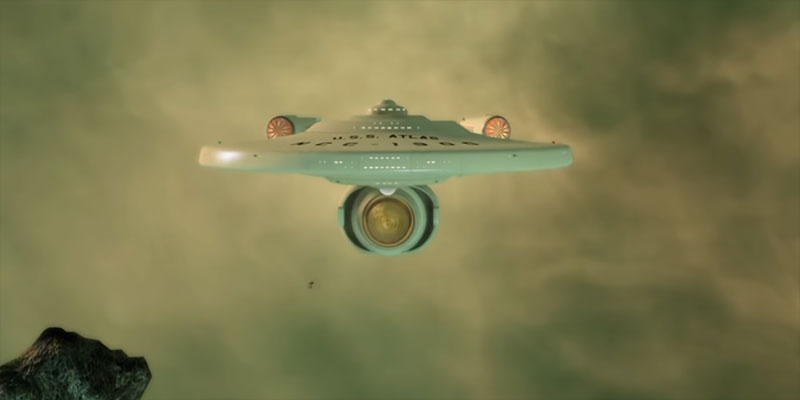
Shield emitters of the time simply were never up to the task of handling a dedicated power source like that of a second warp core even while at the minimal output. But Starfleet’s team in charge of the Atlas design felt they had solved that problem, and perhaps out of sheer faith or perhaps out of blindness, Starfleet agreed to include the secondary Warp Core. The Atlas Design ended up being a complete failure.
Almost immediately during the shakedown cruise, it was quickly apparent that even this smaller core generated far too much power for the shield systems to handle, overloading them 43 seconds into their trial, and to avoid a warp core breach, the secondary core had to be shut down while Starfleet engineering and Warp Core Designers analyzed the data on the failure of the system.
Meanwhile, warp speed tests began their trial, and although the new nacelles were able to reach the speed of the Constitution Class, they simply could not reach those of the Gemini Class, as the warp field the new nacelles generated at greater then Warp 8 speeds became far too unstable to be relied upon, even the Phaser batteries designed for the Atlas Class failed. these new Phaser batteries were designed to be continually charged by the new warp core, meaning they could not be exhausted like those of the Constitution Class. However, the recharge process failed, and so these new Phaser batteries, which did allow a 20% increase in Phaser output, merely meant the phasers were drained faster than the Constitution Class design.
Starfleet was unimpressed, but their problems didn’t end there. The Federation Council began an inquest into the whole matter, calling on Starfleet to account for its poor actions and decision making. For Starfleets part, they pushed their design teams to solve the Atlas Problems as quickly as possible, and although pouring significant resources in the issues, the best minds in Starfleet could not correct them.
And as a result, Starfleet command would be compelled to admit defeat to the Federation Council, who in turn would usher out several admirals in Starfleets Command echelon, forcing early retirement for those heads involved in the project, and this call to account by the Federation Council would send ripples through Starfleet Command causing them to re-evaluate many of their procedures to ensure an embarrassment such as the Atlas class would not happen again.
With 1 complete Atlas Class Starship, and 11 others almost complete, Starfleet made the decision to downgrade the technology in the Atlas class, removing the secondary Warp core and replacing it with further hanger deck storage facilities. and replacing the defective Phaser batteries with the standard Constitution Class rated models, but even with these changes, the Atlas Class still could outperform the Constitution Class, thanks to it’s larger warp core. But because of it’s tarnished reputation Starfleet Command would abandon the future construction of this class, and basically pretend as though it never existed, never even commissioning its Core of engineers to look into the possibility of a refit to this design. And by the 2280s, the remaining Atlas Class starships would be ushered out of active service, quietly placed into Starfleets decommissioned shipyards.
Though both the Ranger and Atlas Classes were never seen as the best of the best by Starfleet, the Ranger Class being commissioned on the cusp of Starfleets Constitution class refit technology breakthrough and the Atlas Class being an utter failure at the beginning of it’s career, both classes have been seen in a different light by future Starfleet Historians.
If not for Starfleet’s continual drive to better itself, and push for the ability to protect Federation Citizens many believe the Constitution Class refit Breakthroughs would not have happened.
If Starfleet had not resigned itself to correcting it’s image as quickly as possible after the Atlas class debacle with the member worlds of the Federation, then when V’ger Attacked in 2273, Earth most likely would have been lost to its wayward probe.
So, even though not the best of the best, these classes did contribute to the future of Starfleet Command and the United Federation of Planets, earning both these classes their place in Starfleet history…
Thank you for watching today’s episode of Truth or Myth, what do you think of Ranger and Atlas Class Designs from Star Trek: Online done in the style of the TOS Era of Star Trek? Did you enjoy my non-canon interpretations of them? Well leave your comments in the section below and don’t forget to like the video and subscribe to the channel, hitting that little bell icon so you won’t miss a single video we release.
I’d also like to thank Captain Geronimo for providing me with the Atlas Class Beauty Shots. If you haven’t checked out Captain Geronimo’s YouTube Channel yet, and love Star Trek: Online as I do, then you should stop by and say Hi! He has an amazing channel with a lot of valuable information. The link to it is in the description below.
What to help the channel maintain it’s spotless image? Then just click HERE to become a channel Patron…
Watch The Latest Truth Or Myth Below
Thanks again for watching, Live long and prosper…

